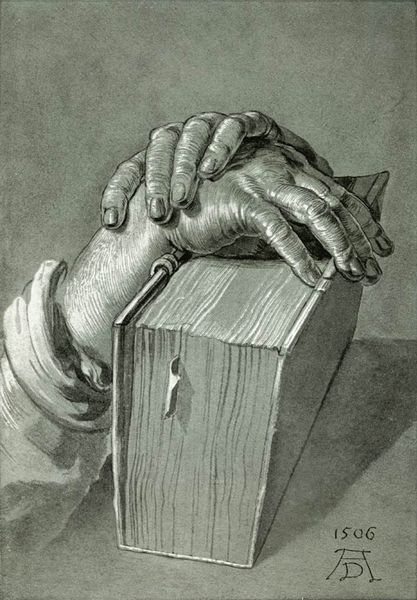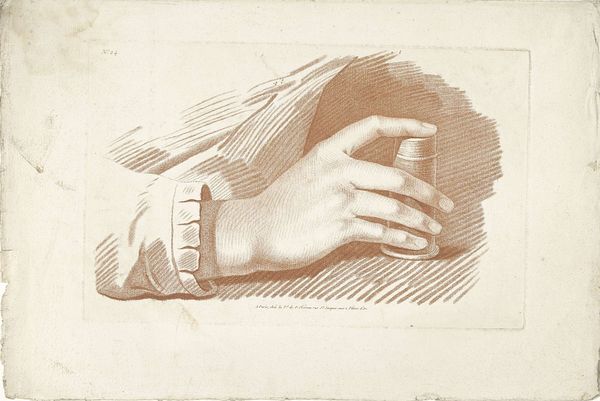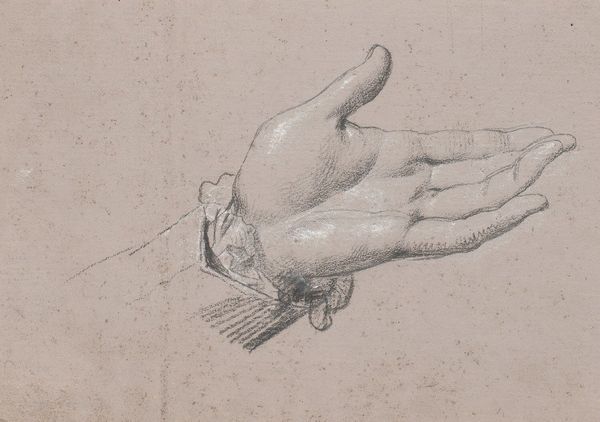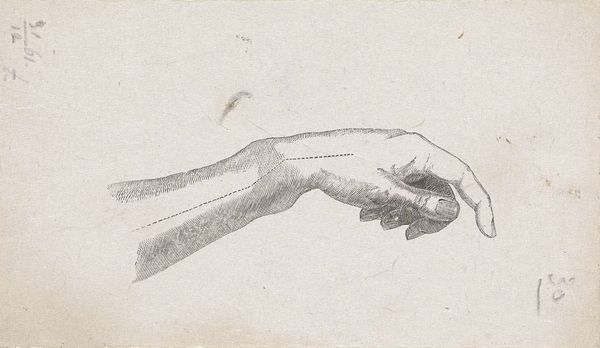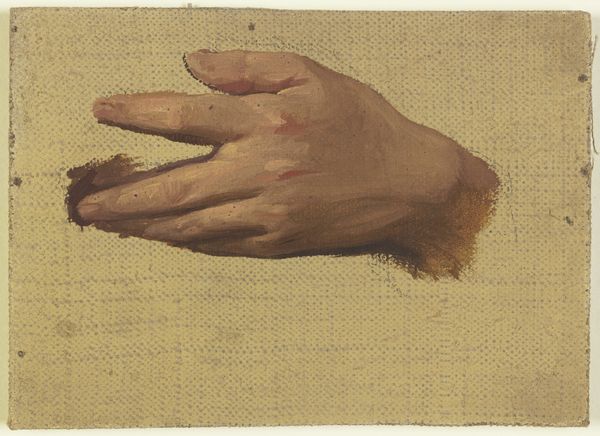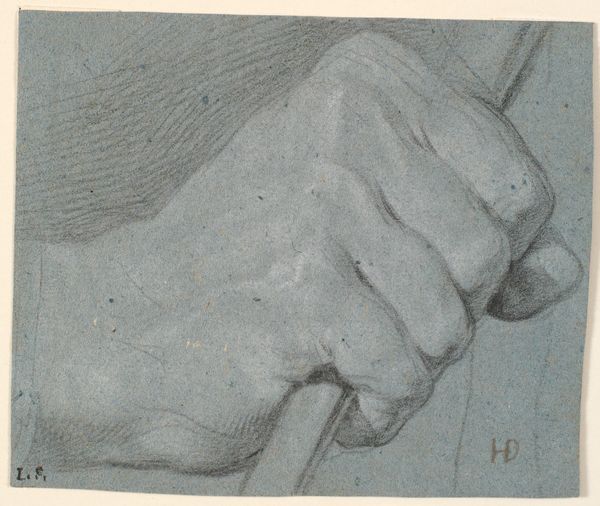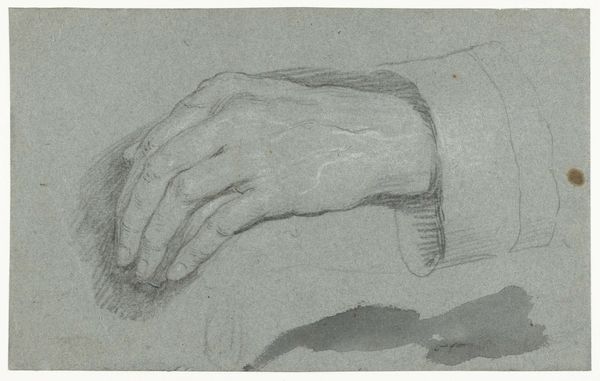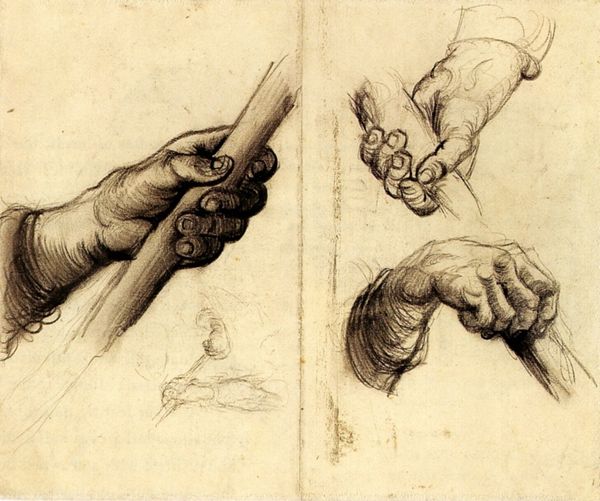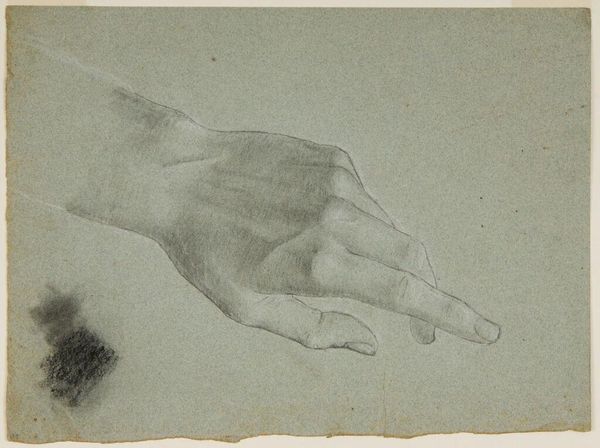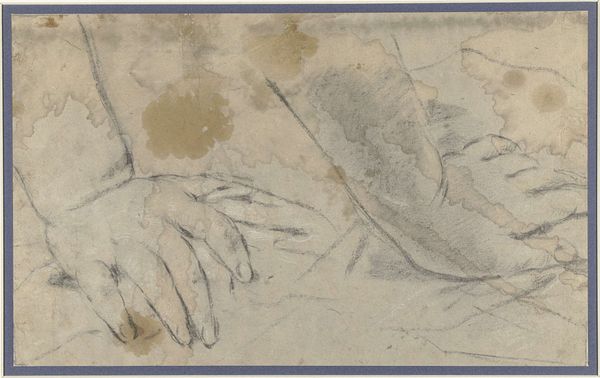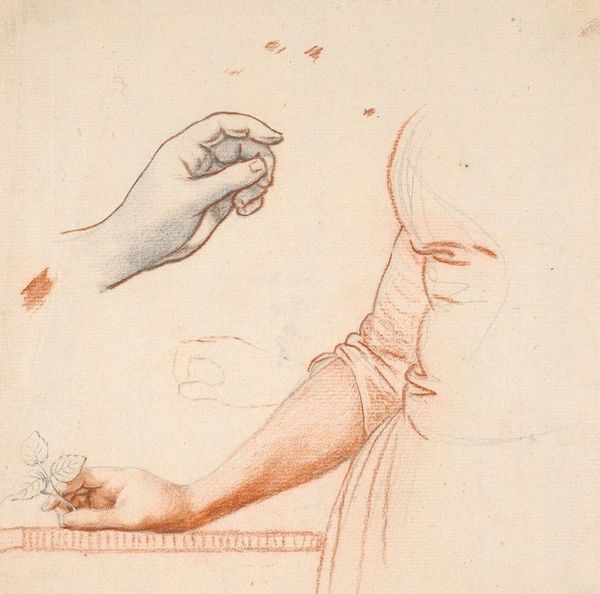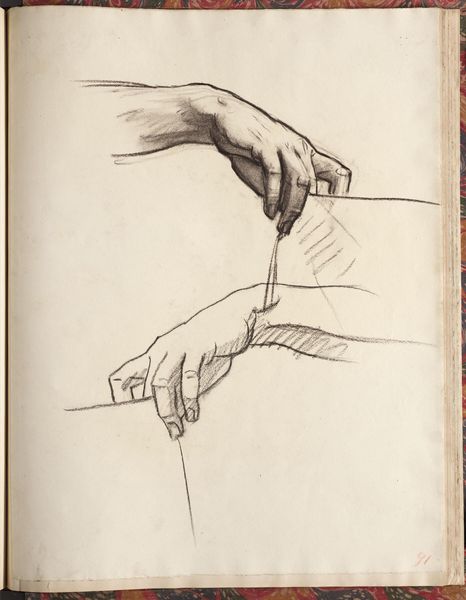
drawing, paper, pencil
#
portrait
#
drawing
#
book
#
charcoal drawing
#
paper
#
form
#
11_renaissance
#
portrait reference
#
sketch
#
pastel chalk drawing
#
pencil
#
line
#
portrait drawing
#
portrait art
#
realism
Copyright: Public domain
Editor: Here we have "Two Hands Holding A Pair Of Books" rendered in 1506 by Albrecht Durer. It's a delicate drawing on paper that really focuses on the textures of the skin and paper. What stands out most to me is how realistic the hands look. What strikes you when you view this piece? Curator: Immediately, I'm drawn to the artist's command of line and form. Notice how Dürer employs hatching and cross-hatching to meticulously build up the tonal values, creating a palpable sense of depth and volume. Consider how the precise rendering of each crease and bone in the hands contributes to the overall structural integrity. The line directs the gaze, wouldn't you agree? Editor: I see that. It's almost like he’s building up the forms with lines, but does the choice of only focusing on the hands impact the overall effect for you? Curator: Absolutely. By isolating the hands and books, Dürer forces us to confront the materiality of the image. The hands themselves become sculptural forms, their structure emphasized by the interplay of light and shadow. It's not simply about representing hands, but about exploring the very essence of form through the medium of drawing. Observe the geometric arrangement of the books and the implied lines connecting them. How does this compositional strategy guide your reading of the artwork? Editor: That's interesting; I hadn’t considered the books' placement as a geometric arrangement. It definitely leads the eye in a certain way. I guess I was thinking more about what the hands are doing with the books, the human element. Curator: And yet, we cannot divorce the human element from the formal. Consider the interplay between the organic forms of the hands and the rectangular rigidity of the books. This dialectic generates visual tension, compelling the viewer to contemplate the relationship between the human and the object. What did you get from it that surprised you? Editor: I came into this conversation seeing realism as the main theme, but now I see it's all about form and structure through these skillful marks. Thanks for shifting my perspective. Curator: A fresh look is often valuable, but without skill to underpin it, of what value is it?
Comments
No comments
Be the first to comment and join the conversation on the ultimate creative platform.
